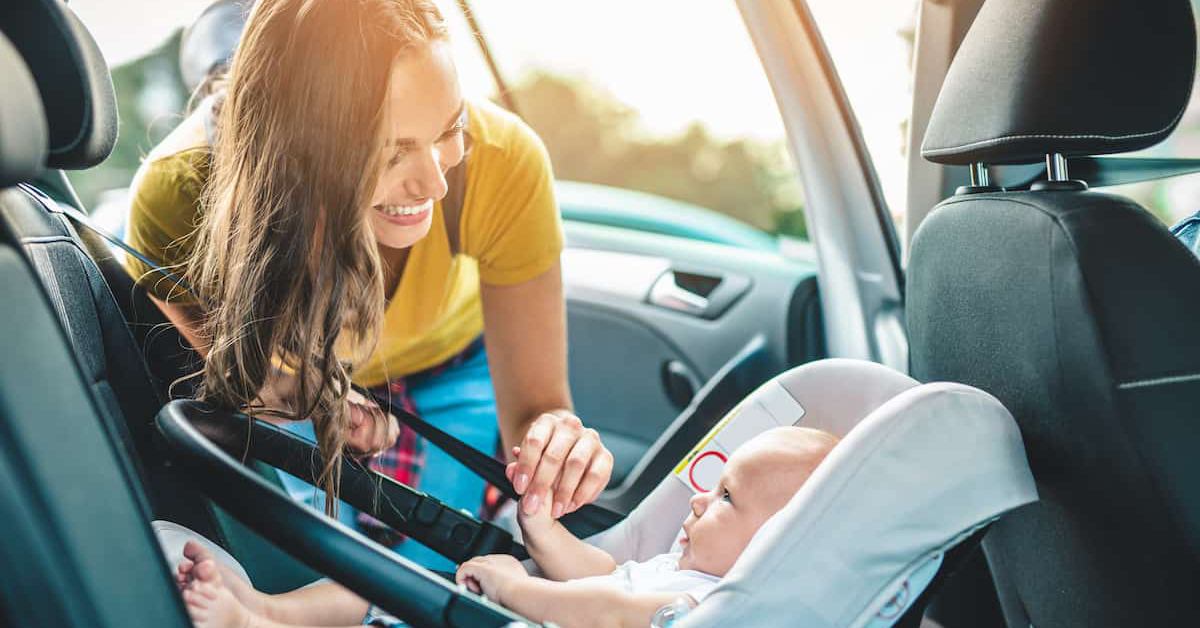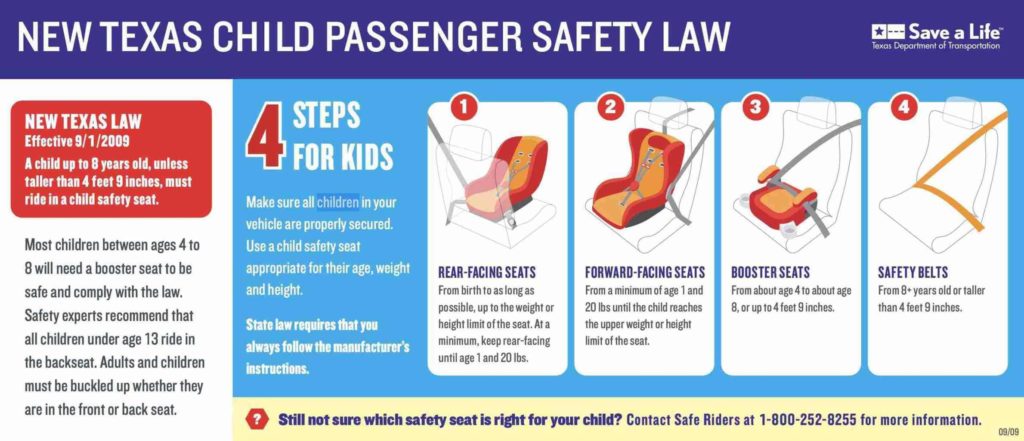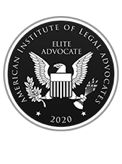
The Texas Department of Transportation states that “motor vehicle crashes are a leading cause of death among children.” This is why it is important to follow all the laws in Texas car seat laws and child safety laws. According to the same source, half of all child car seats are being misused by parents who are trying to keep their kids safe.
The problem is that many people don’t research the right information or have all the knowledge at their fingertips to keep their children safe in their car seats. Many of these people think they’re using their car seats the right way and their children are safe. If you’re unsure whether or not you’re using your car seat correctly or installed your car seat correct, visit SaveMeWithASeat.org for a free inspection of your car seat (or AbrocharlosEsAmarlos.org for Spanish speaking persons).
It is important never to guess when it comes to car seat safety. In fact, according to the American Academy of Pediatrics, when car seats are properly used:
“…child safety seats reduce the risk of injury by 71% to 82%.” Tweet this
Parents who fail to follow car seat law in Texas will be fined up to $250 (and no less than $25). The law is rather straightforward too when it comes to car seats for children. Texas law states that any child that is under the age of 8 years old (unless they are taller than four feet, nine inches) is required to be strapped into a car seat while traveling in a motor vehicle. Any child who is older is required to be restrained in the car by a seat belt. And while disobeying the law might result in a hefty fine, it may also result in the injury of your child, so it’s important to follow the law to a tee.
In 2009 major changes were passed for laws governing seat belts and car seats. This included laws for both drivers and for passengers. One of the major changes included in the law was that all passengers in the back seat of the car must wear a seat belt at all times (both adults and children). These new laws also set the legal requirement of all children under the age of 8 years old having to ride in a car seat, as mentioned above.
The new laws in Texas for car seats are outlined in this useful graphic and still apply in 2020:

If you want to keep your children safe in their car seats, it’s best to follow the “best practice” guidelines set forth by the National Highway Traffic Safety Administration (NHTSA). These guidelines are easy to understand and are broken down into four distinct phases.
Car Seat Best Practices by the NHTSA:
As a good rule of thumb, the longer your child can stay in each phase the safer your child will be in the end. Another good rule of thumb is to keep all children under 13 years of age restrained in the back seat of the car. The American Academy of Pediatrics found that “children seated in the rear are 62% less likely to sustain an injury.” Also, they found that children seated in the rear-center were the safest of all children due to the fact that they were less likely to sustain injury from side air bags.
The American Academy of Pediatrics also created this handy guide that can be printed and kept for reference to help you follow best practices when it comes to child car seat safety.
Non-vehicle related car seat injuries are also commonplace. In fact, in a US Consumer Product Safety Commission study it was found that over 8000 infants visit the hospital each year due to parents using car seats outside of the car in an unintended way. Close to 90% of these injuries were related to children falling out of car seats or car seats falling from where the car seat was placed other than in the car (tables, counters, etc.). Most of these infants suffered from head and neck injuries. This is why it is important to only use a car seat in the way that it was intended by the manufacturer and not for any other purpose.
Car seat laws are not the only laws parents should be following in Texas. In fact, there are many other dangers that also put your child at risk of accident or injury. Here are some of the most common threats to children both inside and outside of cars:
These are just some of the many risks that cars pose to children. Several other risks exist as well, such as carbon monoxide poisoning from a car that is accidentally turned on inside a garage, folding seats clamping down on a child or even a child getting his arm or neck stuck somewhere inside the car when reaching for an object, to name a few. This is why it is always best to never take any chances when it comes to kids and cars. Don’t let your kids play with anything inside your car or play games around your car. It is better to be safe than sorry.
 Top Truck Accident Lawyer in Pasadena
Top Truck Accident Lawyer in Pasadena Best of The Best Attorneys
Best of The Best Attorneys Best of the Best Houston Chronicle 2021
Best of the Best Houston Chronicle 2021 Best Motorcycle Accident Lawyers in Houston 2021
Best Motorcycle Accident Lawyers in Houston 2021 American Association for Justice Member
American Association for Justice Member The National Trial Lawyers 2016 – (Top 40 under 40)
The National Trial Lawyers 2016 – (Top 40 under 40) Multi-Million Dollar Advocates Forum 2016 (Top Trial Lawyer)
Multi-Million Dollar Advocates Forum 2016 (Top Trial Lawyer) Million Dollar Advocates Forum 2019 (Top Trial Lawyer)
Million Dollar Advocates Forum 2019 (Top Trial Lawyer) America’s Top 100 Attorneys 2020 (High Stake Litigators)
America’s Top 100 Attorneys 2020 (High Stake Litigators) Lawyers of Distinction 2019, 2020 (Recognizing Excellence in Personal Injury)
Lawyers of Distinction 2019, 2020 (Recognizing Excellence in Personal Injury) American Institute of Personal Injury Attorneys 2020 (Top 10 Best Attorneys – Client Satisfaction)
American Institute of Personal Injury Attorneys 2020 (Top 10 Best Attorneys – Client Satisfaction) American Institute of Legal Advocates 2020 (Membership)
American Institute of Legal Advocates 2020 (Membership) Association of American Trial Lawyers 2018 - Top 100 Award recognizing excellence in personal injury law
Association of American Trial Lawyers 2018 - Top 100 Award recognizing excellence in personal injury law American Institute of Legal Professionals 2020 (Lawyer of the Year)
American Institute of Legal Professionals 2020 (Lawyer of the Year) Lead Counsel Verified Personal Injury 2020
Lead Counsel Verified Personal Injury 2020 The Houston Business Journal 2021
The Houston Business Journal 2021